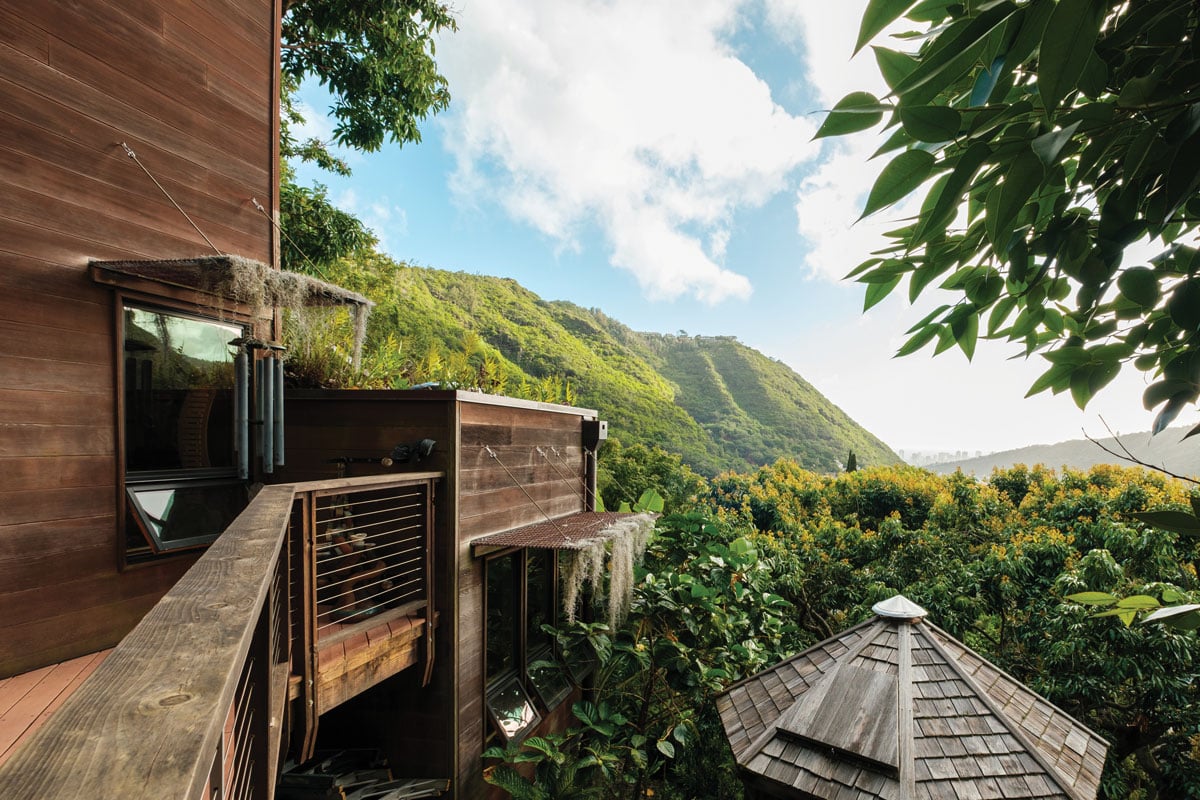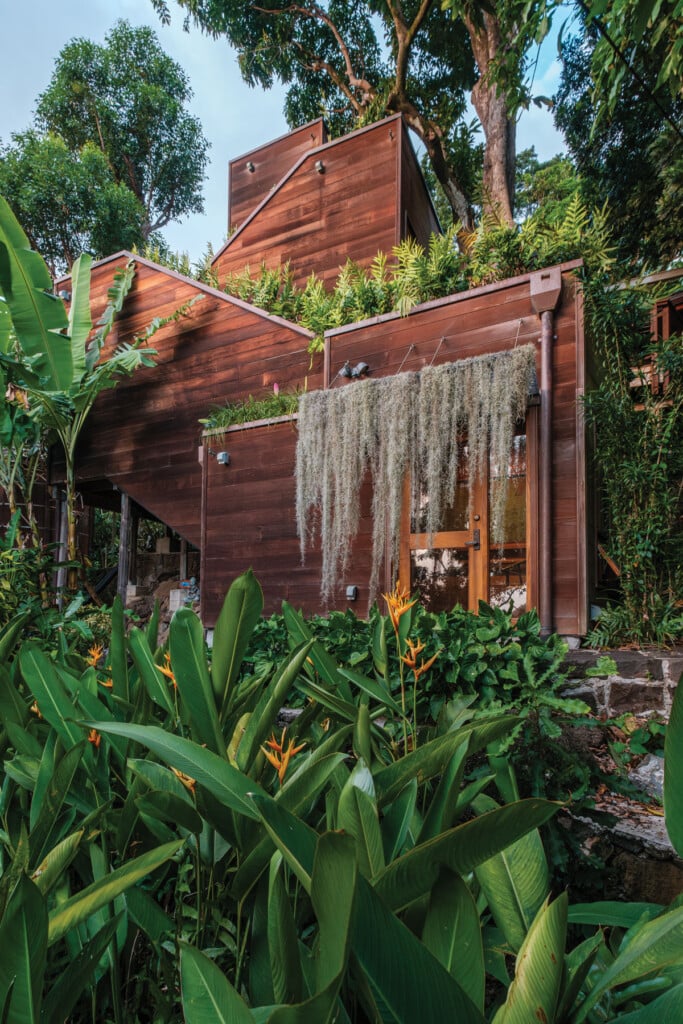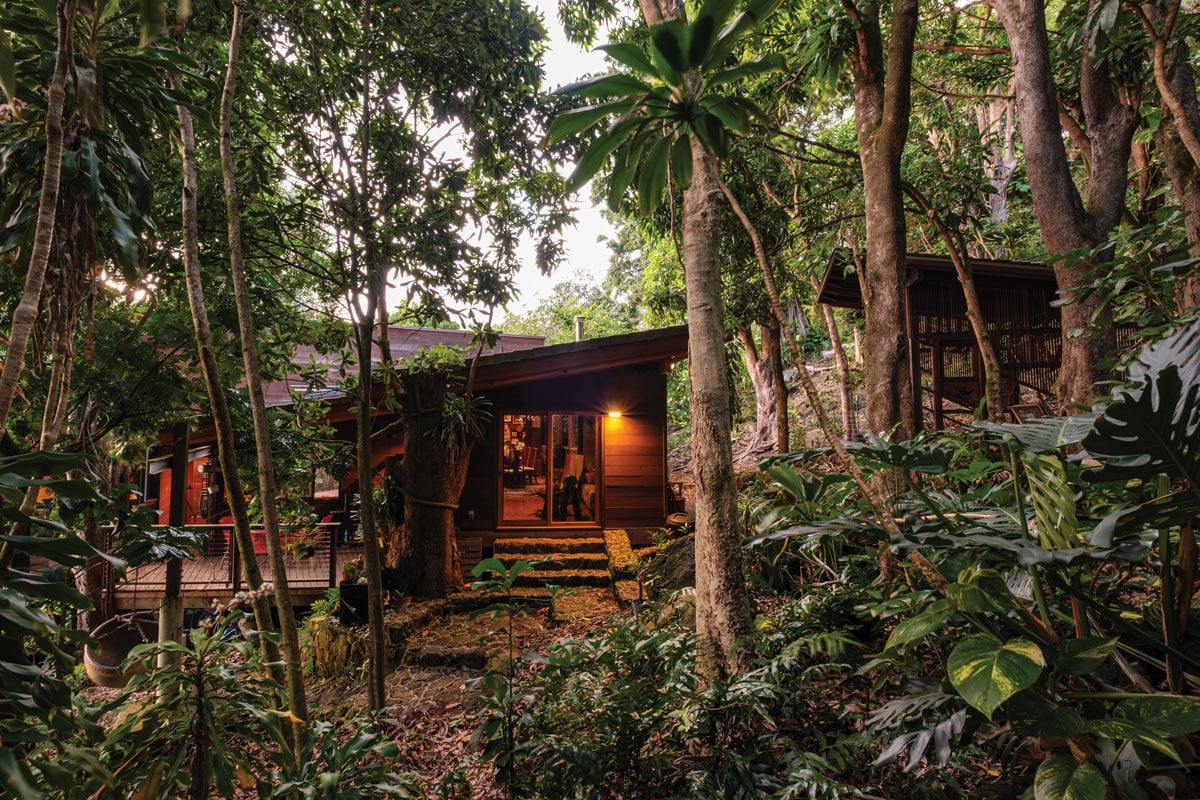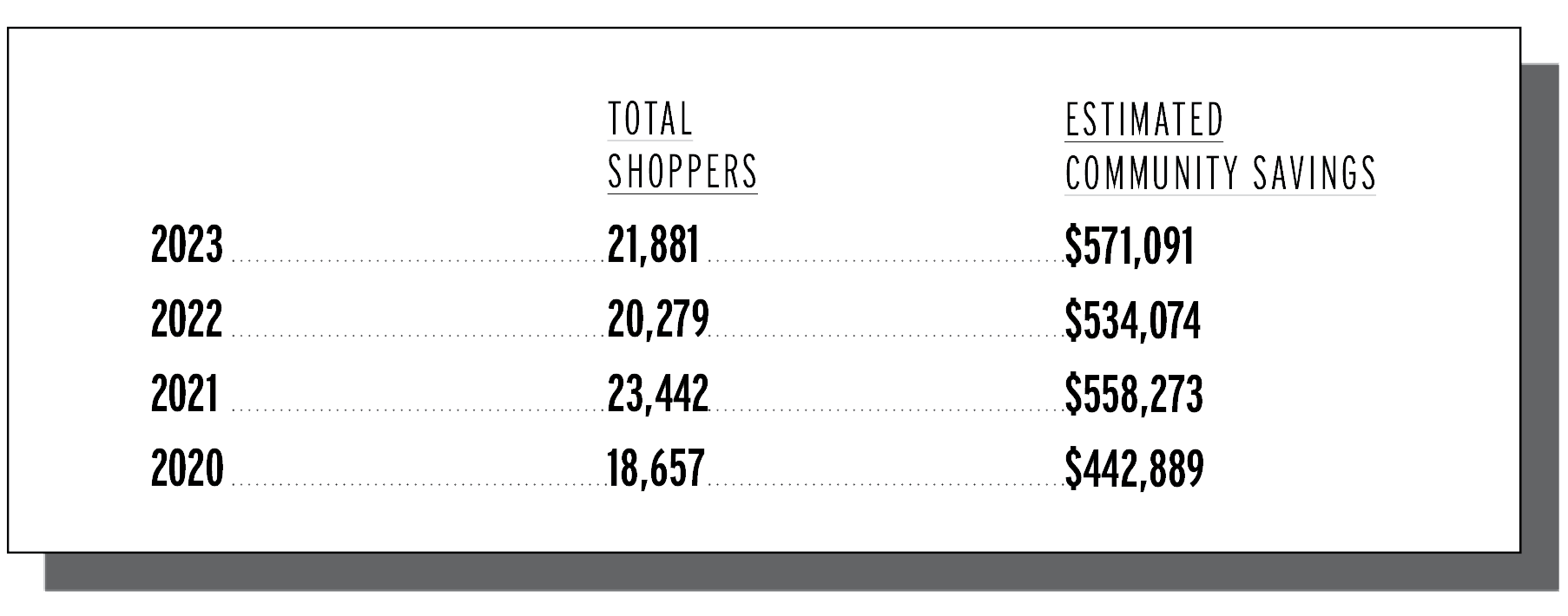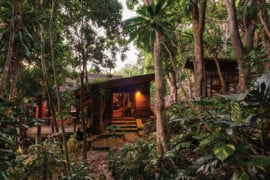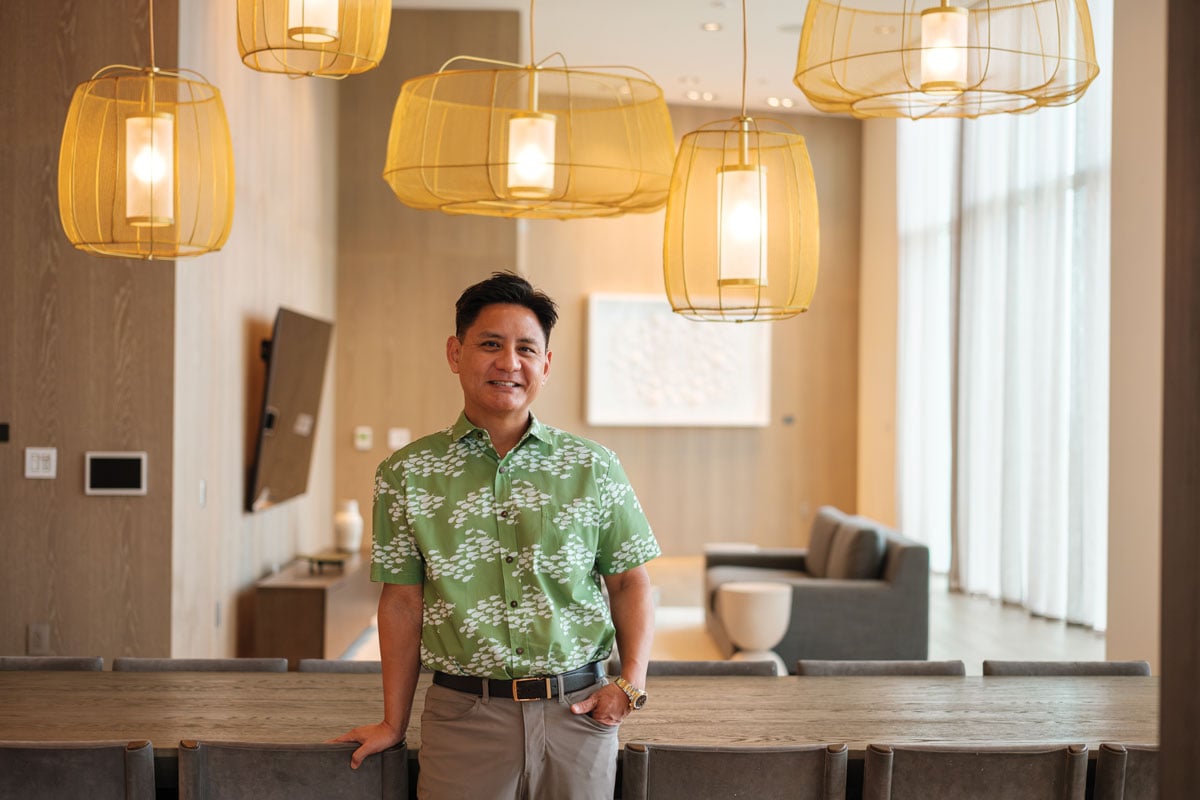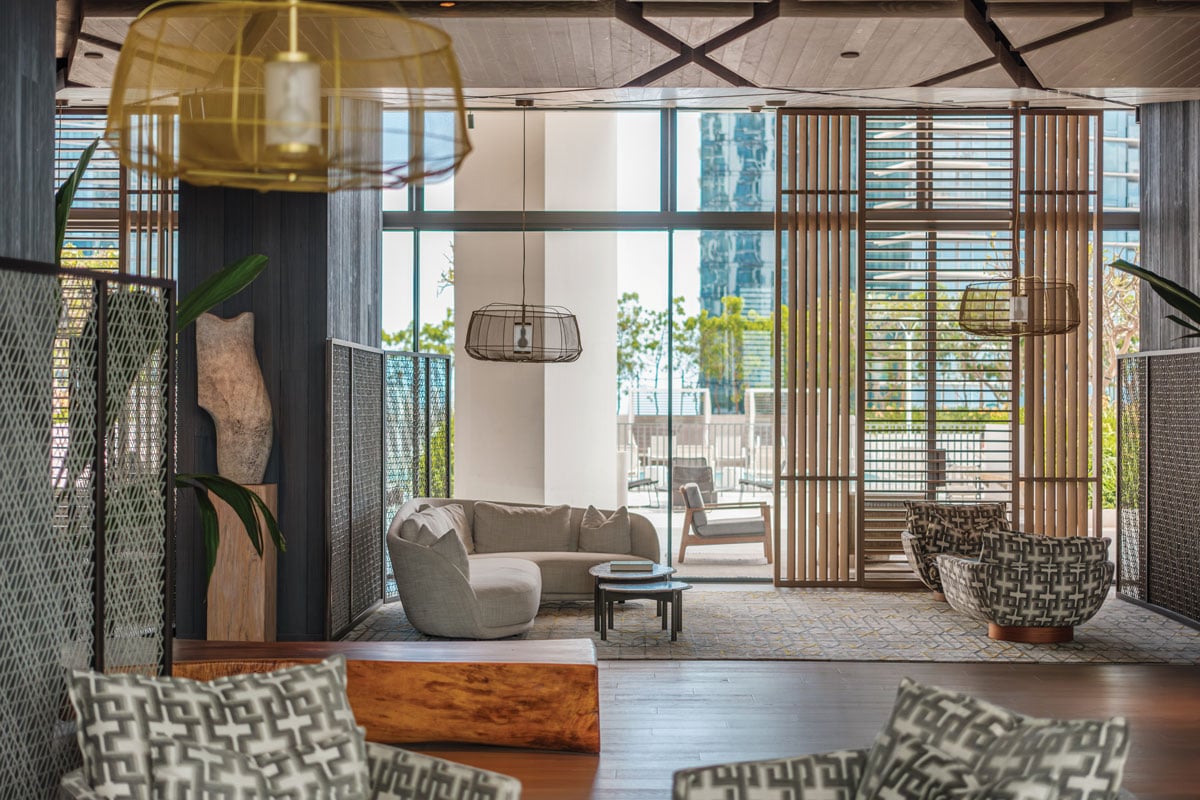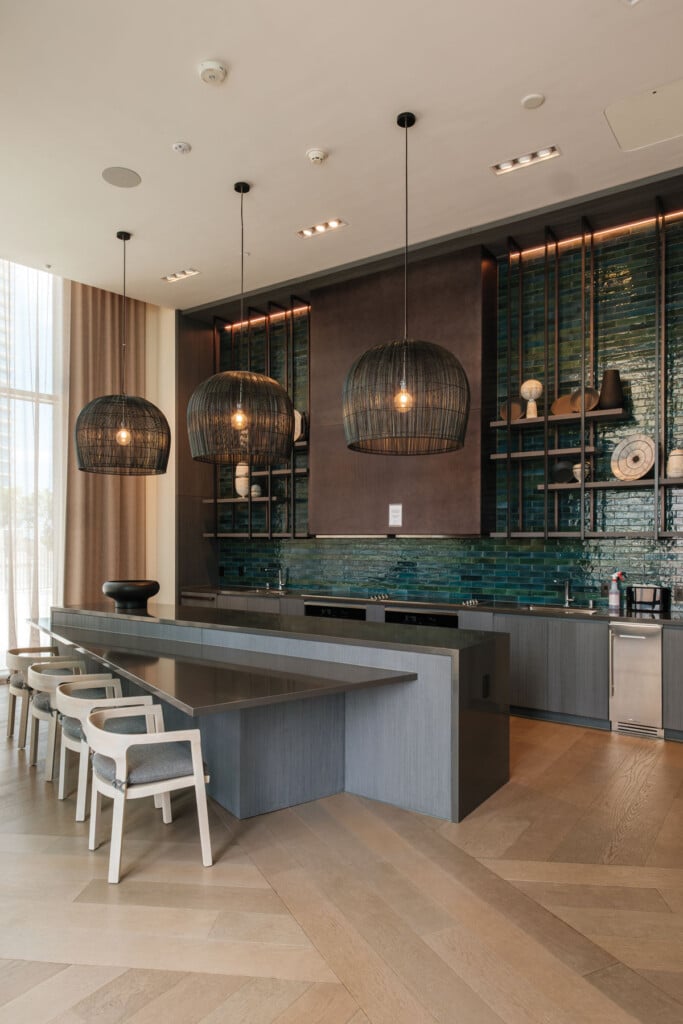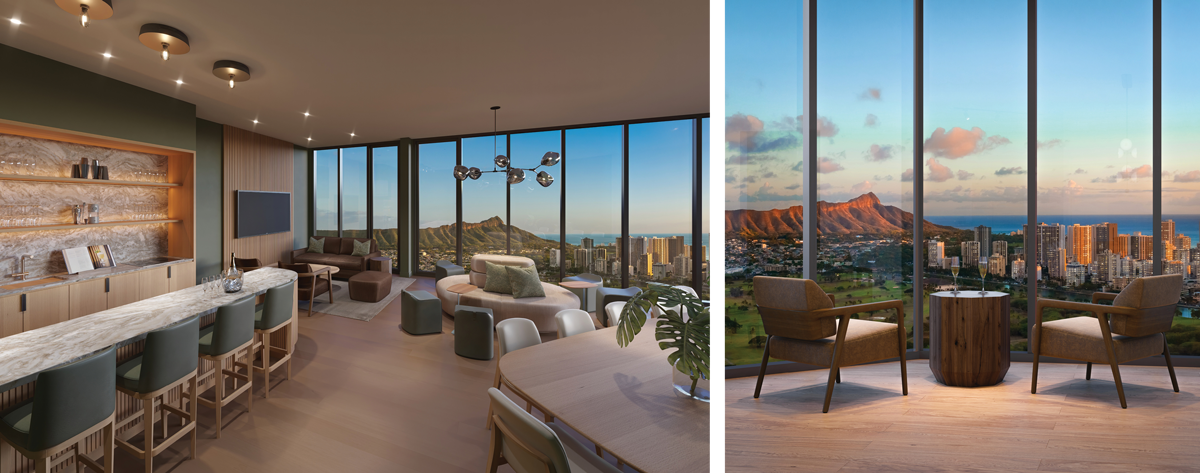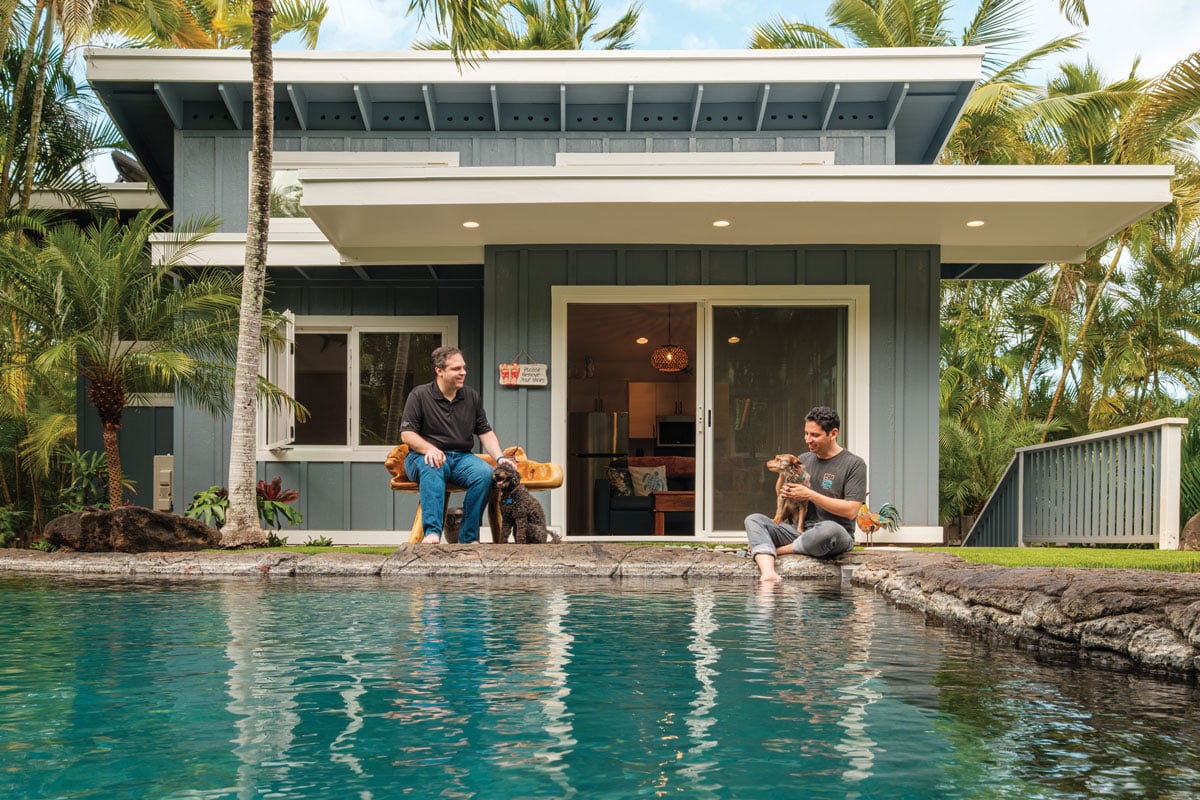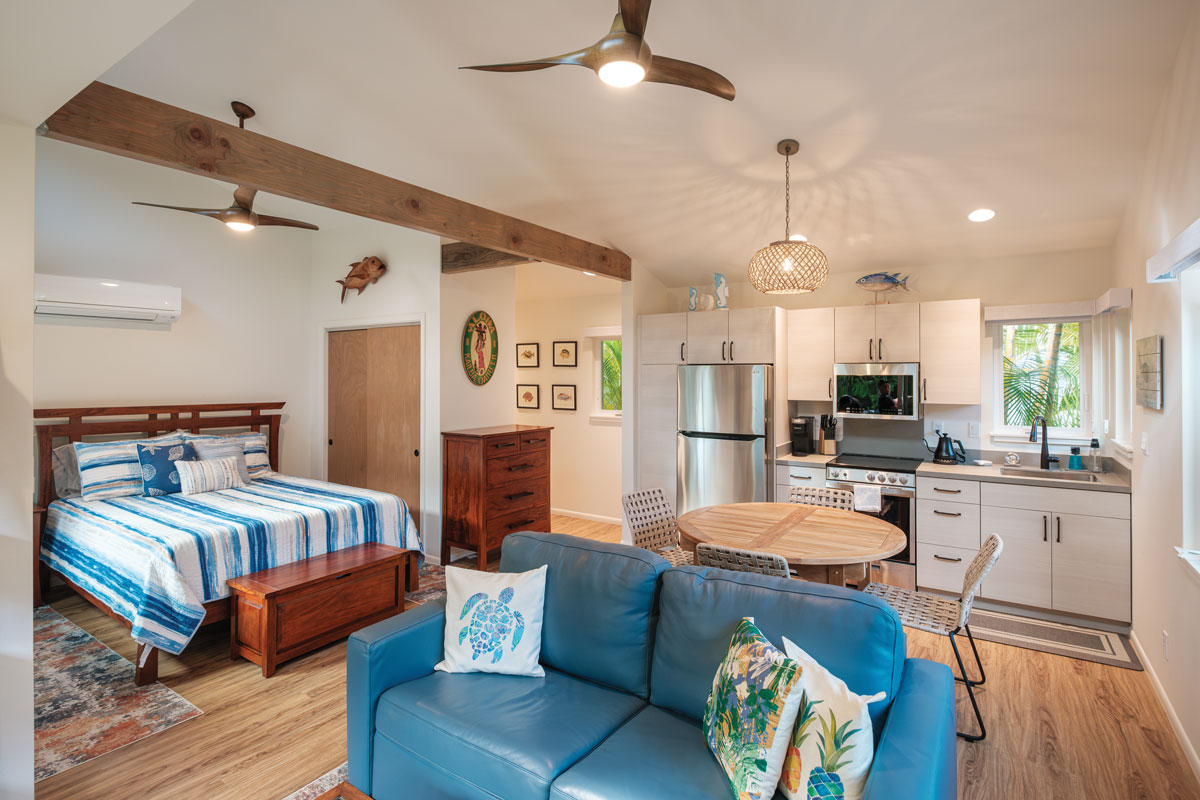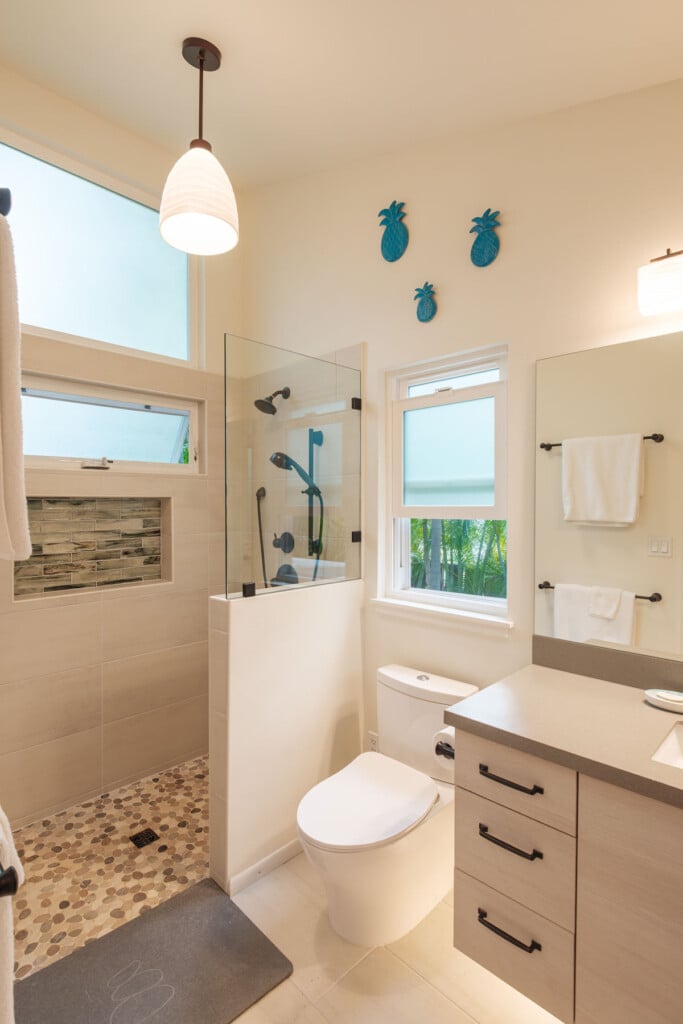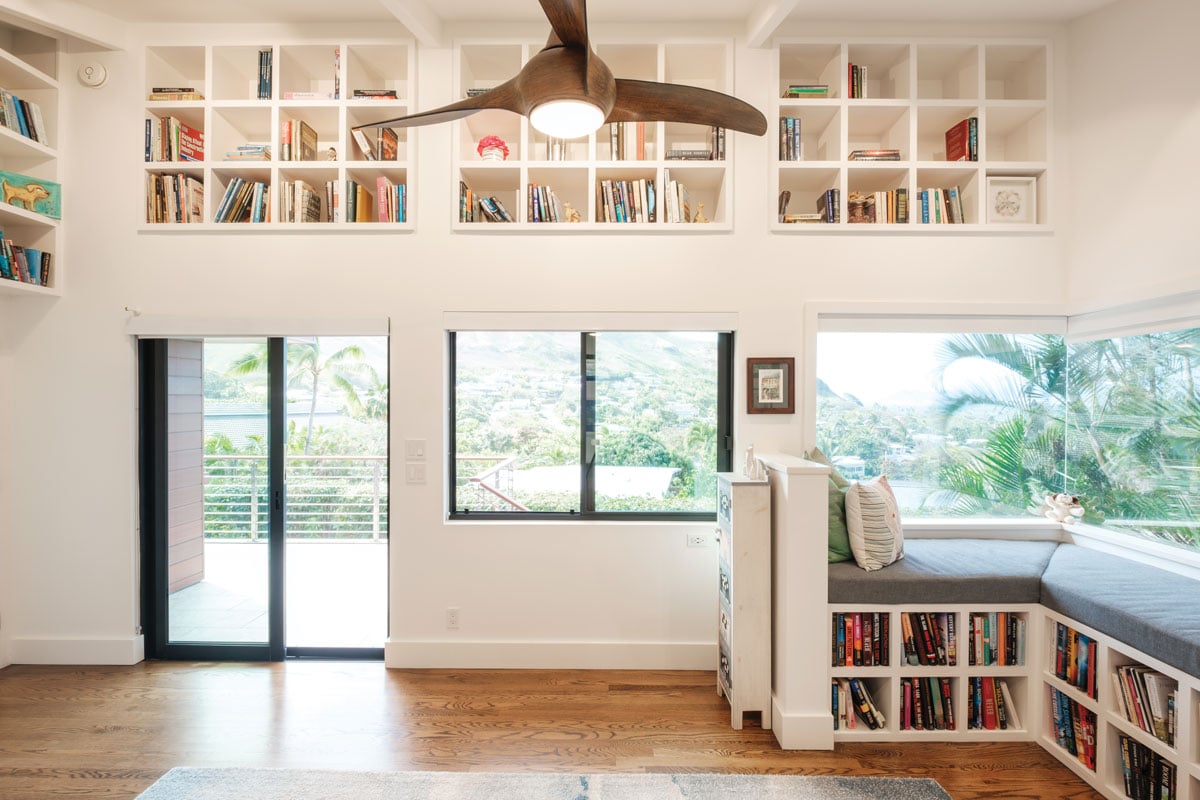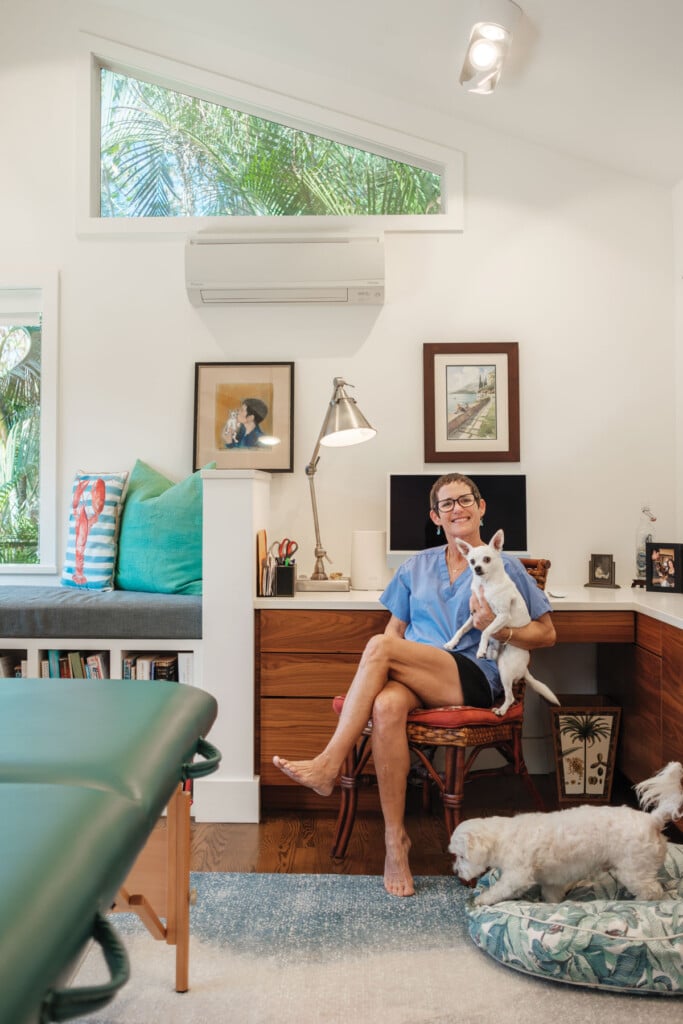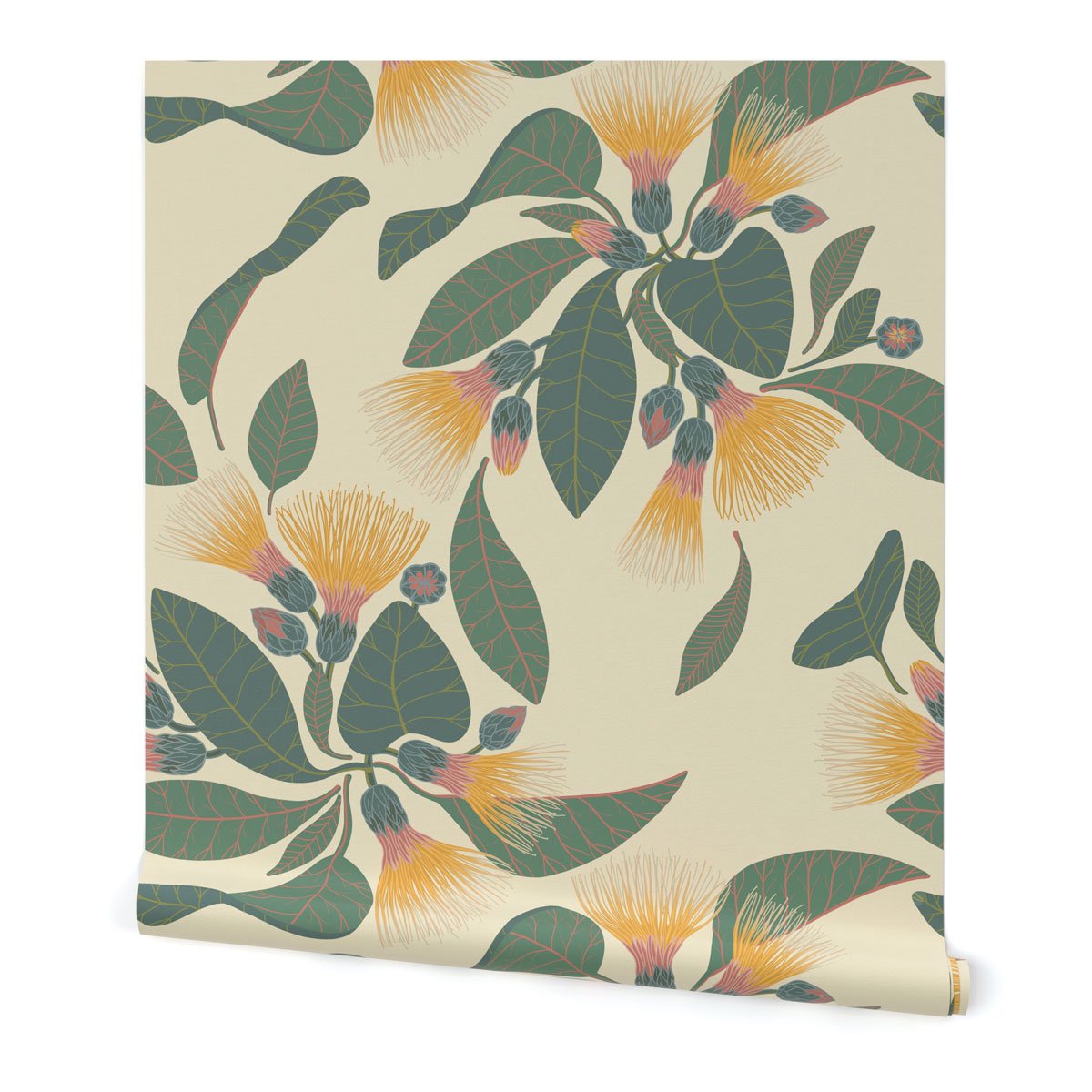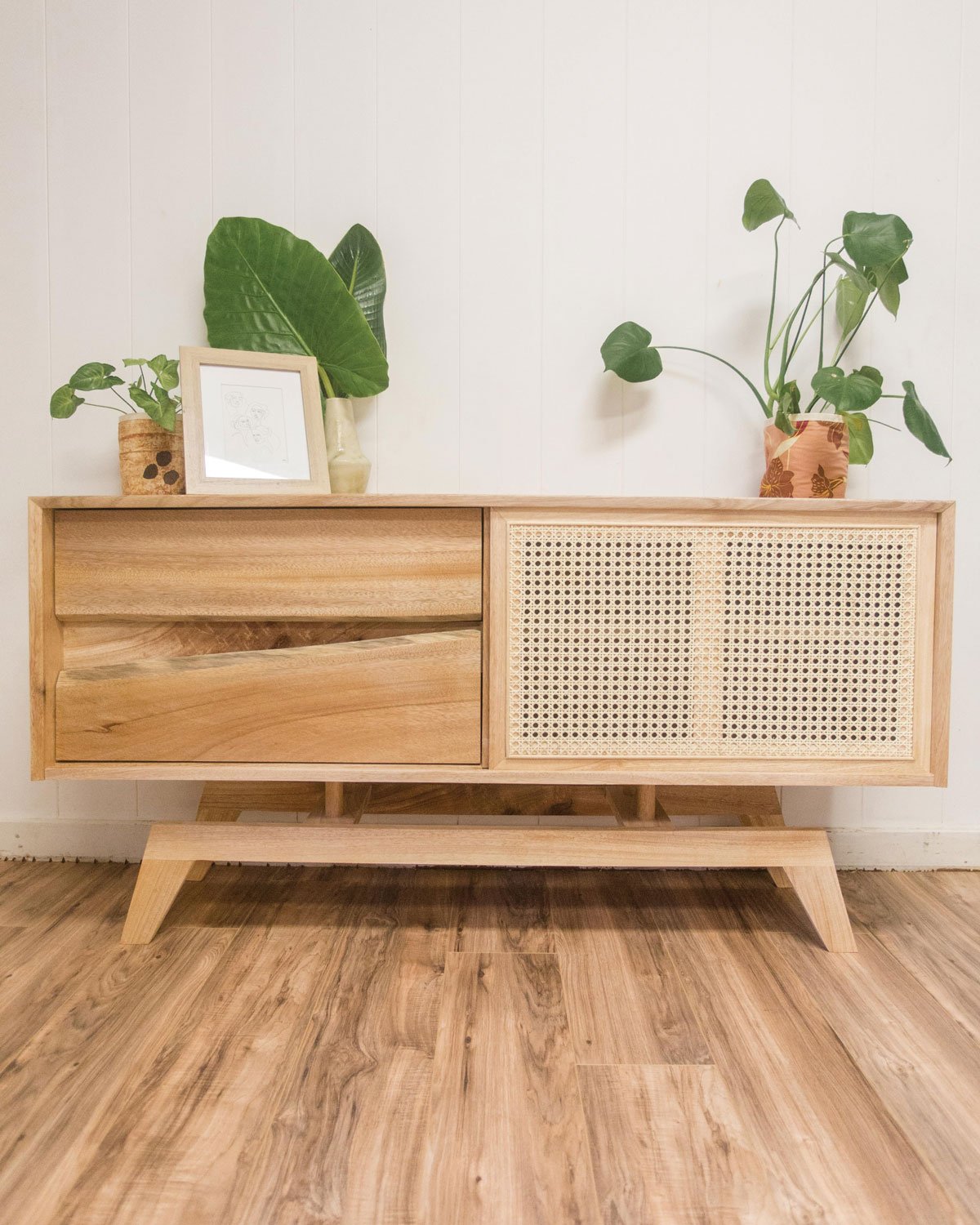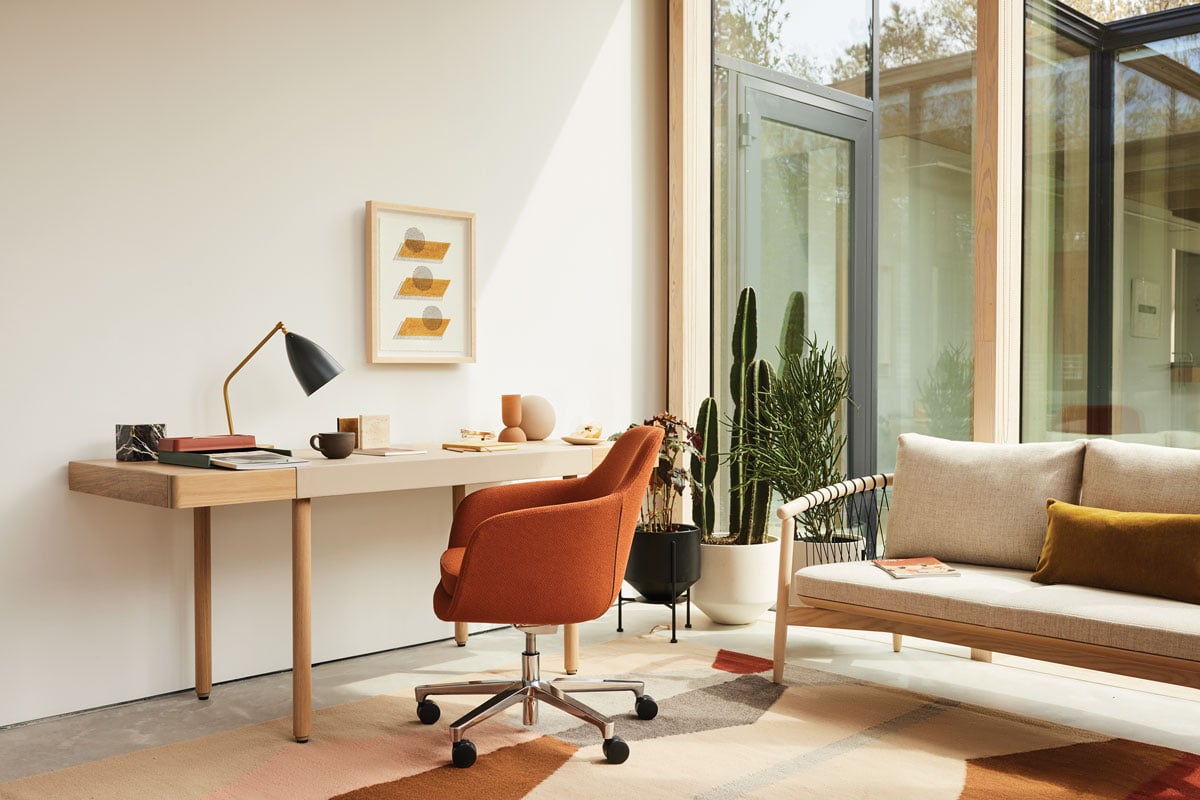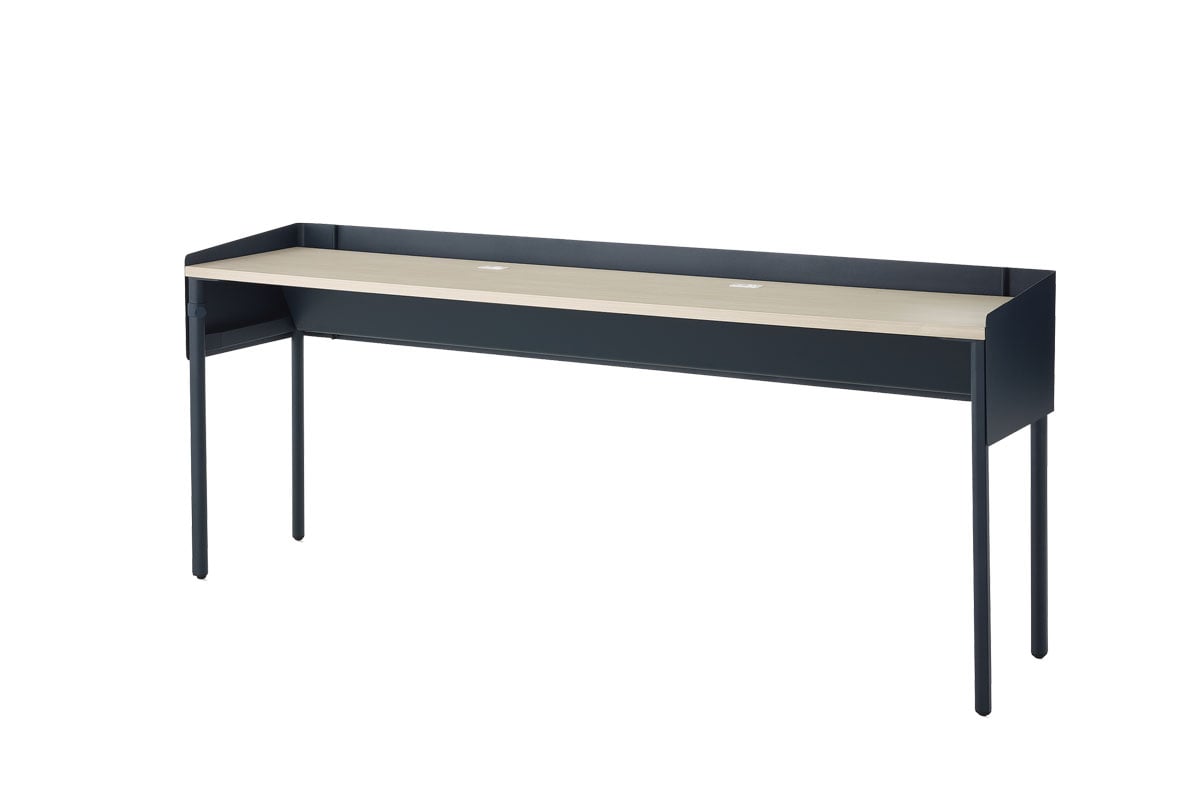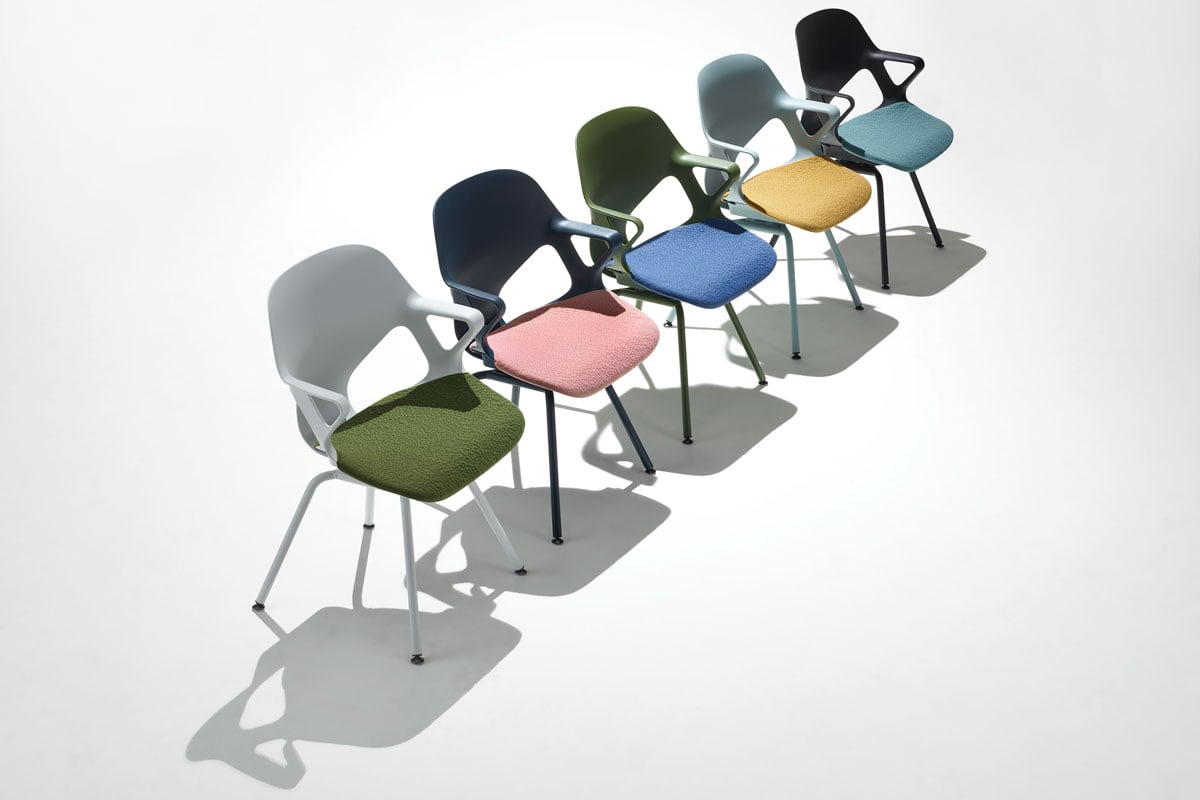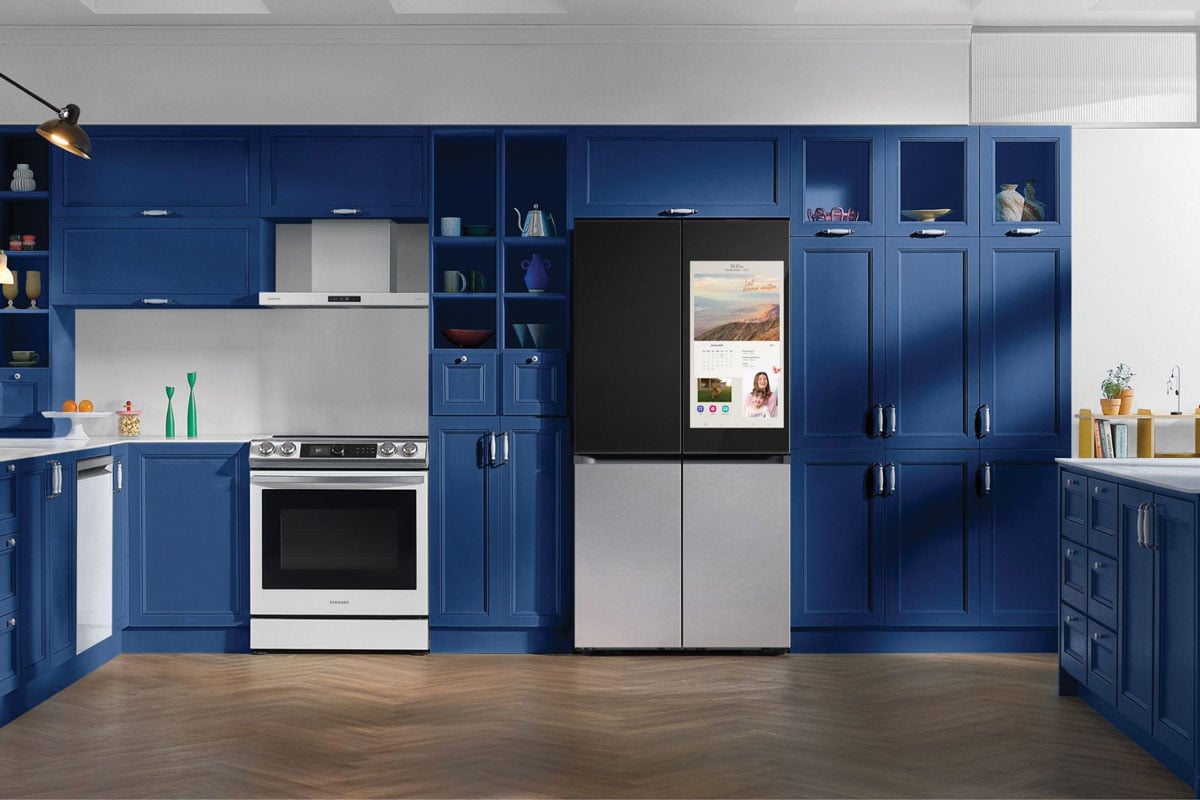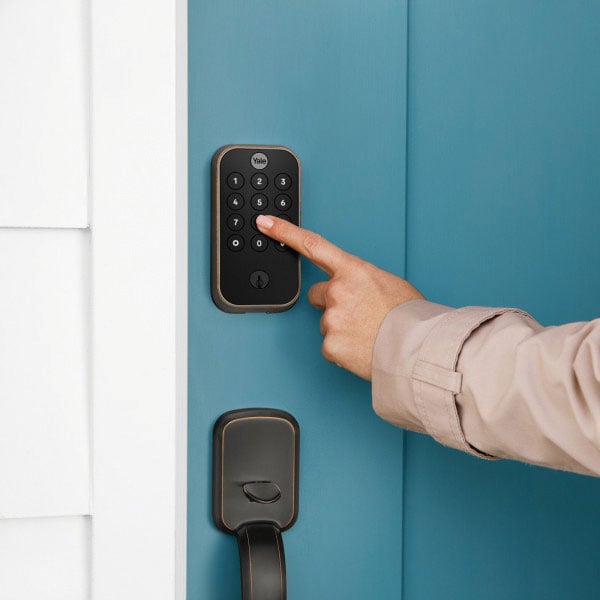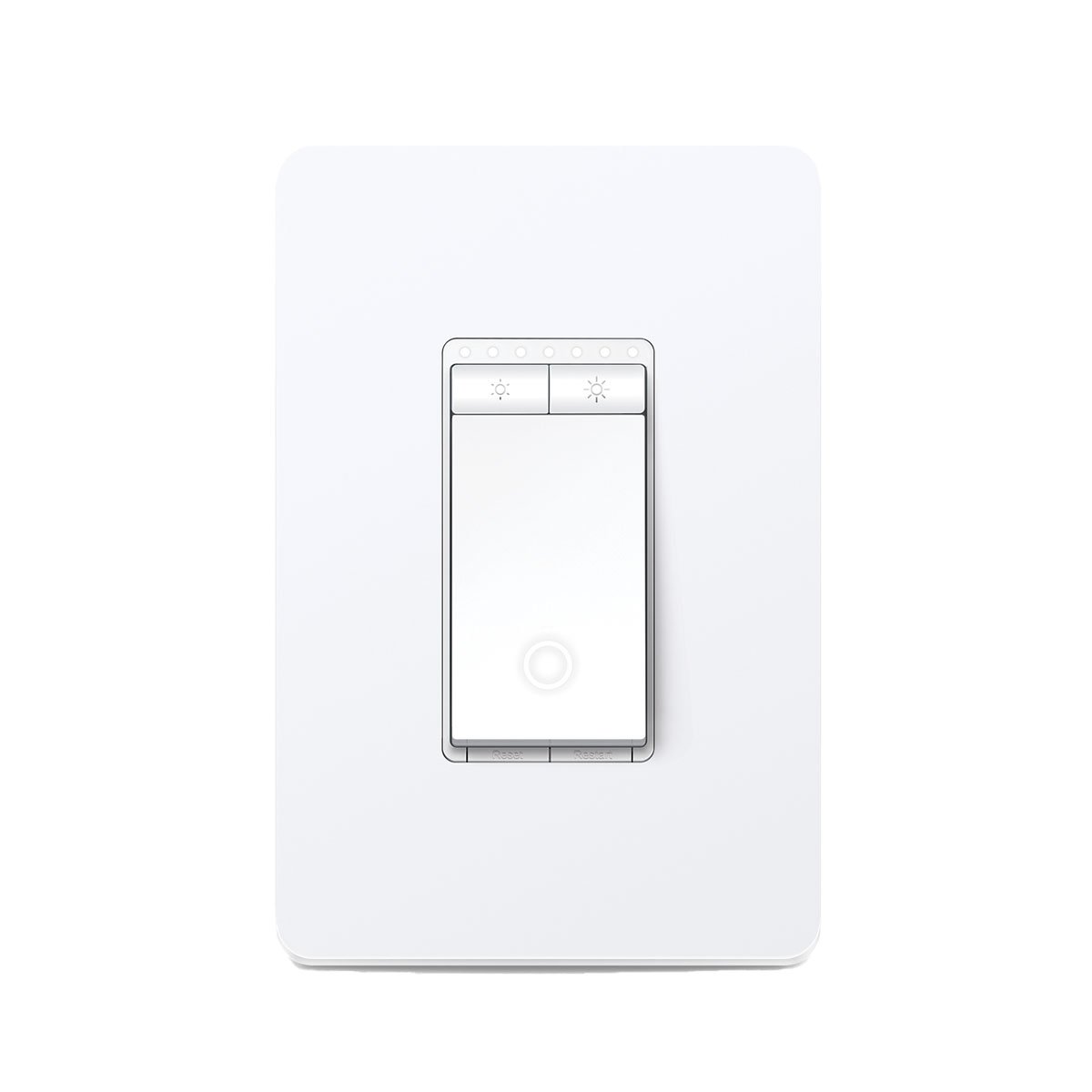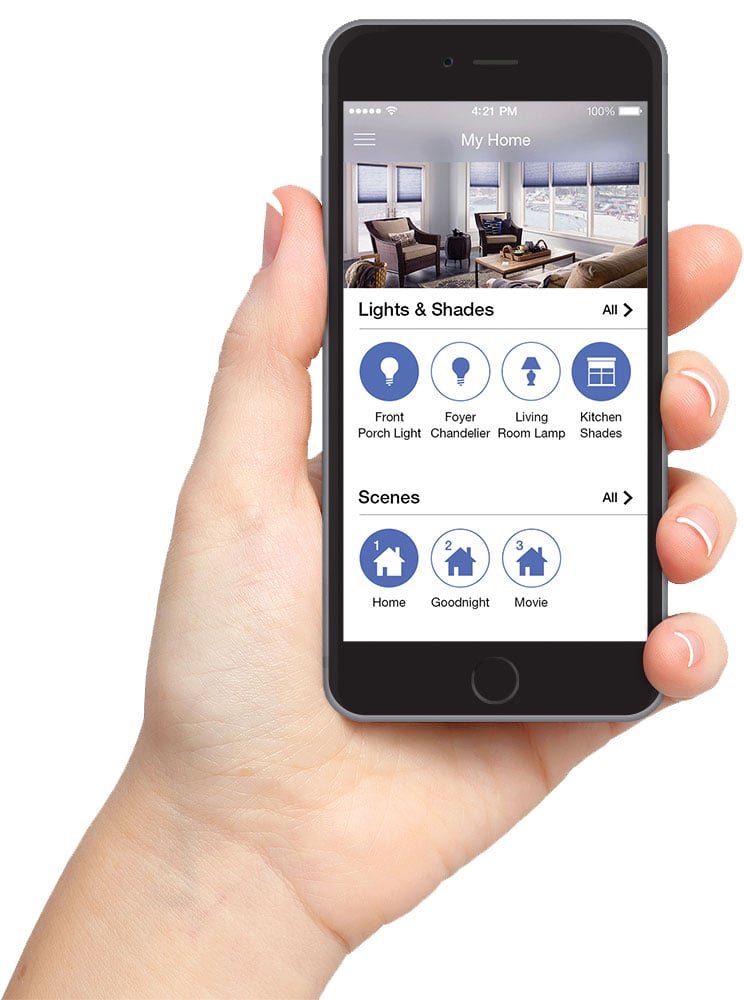For this year’s real estate-focused issue, we look at five home trends happening in Honolulu.
THE WAY WE LIVE NOW
WHETHER WE’RE IN A HOUSE, CONDO OR APARTMENT, we’re living differently than before. Changes have come with the rising cost of living, the pandemic, endless advances in technology and adjusted sensibilities of what’s important and what’s not. While some trends are happening nationwide, even globally, others are more specific to Hawai‘i. We spoke with local homeowners, Realtors, architects, interior designers and others about five ways we’re living today and why.
TREND 1
GREEN LIVING TO SAVE THE PLANET—AND MONEY
GREEN LIVING, long part of our city’s social conscience, had been regarded by many as too costly to embrace. But that sentiment has shifted in recent years with the increased availability of sustainable materials and products and more competitive pricing. Homeowners and developers are seeing that going green ultimately saves money, while also helping to preserve the planet.
With Hawai‘i’s soaring energy costs (electricity here costs more than anywhere in the country), more people are adding photovoltaics, or PV, to cut electric bills. Last year, Hawaiian Electric reported approximately 45% of O‘ahu’s single-family homes had rooftop solar, an increase from 33% in 2019. Honolulu leads the country for solar power among surveyed cities, earning it a distinction as a “solar superpower,” according to a 2021 report by Environment America Research & Policy Center.
Condos Also Going Green
Like homeowners, condo developers with environmental and economic concerns are leaning into eco-friendly builds. New developments are under pressure to keep maintenance fees as low as possible amid dramatically rising insurance costs and a real estate market hindered by high mortgage rates. Going green from the beginning is no longer just a noble environmental consideration, but a way to make condos economically viable for buyers.
Some of the nation’s top sustainability-focused architects, designers and environmental consultants were brought in by the Kobayashi Group to construct Ālia in Kaka‘ako, one of the city’s most environmentally mindful high-rises to date.
To start, the tower was intentionally positioned for maximum airflow and trade winds so units would rely less on air conditioning. To cut the building’s water costs, Ālia will recycle water from washing machines, showers and bathroom sinks, otherwise known as gray water. The water will then be processed through a sophisticated treatment system and used for central AC throughout the property. It’s estimated that this will save 8 million gallons of water annually, and lower overall homeowner maintenance fees. The building, with 411 units, also will have extensive photovoltaics to reduce electricity consumption, producing the same amount of energy to power 110 Hawai‘i homes annually. —DS
During the pandemic, with people spending more time at home, there was a big spike in PV installations as energy costs rose. Homeowners likewise are opting for energy-efficient appliances and LED lights, as well as solar water heaters and low-flow faucets to lower their utility bills.
“Electricity costs are high here, and they’re going to get much higher in coming years because of what’s going on in Maui and with Hawaiian Electric,” Honolulu Realtor Jaymes Song says. “During COVID, we all saw our electricity bills go up. People are being forced to make more sustainable decisions because there’s a big cost not to do so.”
In Wailuku Heights in 2008, Shane and Michelle Jackson built Maui’s first Gold LEED (Leadership in Energy and Environmental Design) home. They also renovated their current Kailua home in 2010 with sustainability as a core goal, adding PV, solar heating, low-flow water fixtures and energy-efficient appliances. And they chose green products and materials at an added expense.
“We wanted to do our part out of concern for the environment and for a better future for our children,” Shane Jackson says. Back then, their “green build” was considered somewhat cutting edge; now it’s common. Jackson calls it progress.
Four years ago, Gary Hogan built an energy-efficient home in East O‘ahu that earned him a Platinum LEED certification, including installing solar features and foam insulation in the walls to cool the home naturally. “Prices have come down,” Hogan says. “You don’t have to escalate your budget to build this way—it’s more affordable now.”
More Willing to Reuse
Instead of rushing out to buy new furniture or building materials, more people are looking for reused or recycled products. Re-use Hawai‘i, which sells sustainably sourced building materials and furniture at its Kaka‘ako and Hawai‘i Island redistribution centers, has seen a boom in business, particularly since the pandemic.
TREND 2
THE CITY'S NEW CONDOS: AMENITIES GALORE
WHETHER YOU LIKE OR LOATHE IT, Honolulu increasingly is becoming a vertical city, with new condos rising across Kaka‘ako, the Ala Moana and Ke‘eaumoku areas and other Honolulu neighborhoods.
While the city’s condos have long had pools, gyms and rec rooms, shared amenities at some properties are now the main attraction—next level, actually—rivaling the Islands’ most luxurious resorts. “They’re truly world-class,” Realtor Song says.
For example, the former Davies Pacific Center in Downtown Honolulu is undergoing a major renovation, spearheaded by the Avalon Group, to create Modea, a mixed-use residential, retail and commercial high-rise with 352 condo units. Modea is scheduled to launch in late 2025, with studios starting in the $400,000 range, and two- and three-bedrooms starting around $1 million. In a press release announcing the development, Avalon highlighted Modea’s amenities, including expansive indoor and outdoor gathering spaces and barbecue areas, a coworking hub, club room, 3,000-square-foot fitness center, yoga/dance studio, music rooms, hobby/crafting workshop, gaming spaces, two dog parks and a pet washing station.
The amenities at Kobayashi Group’s Ālia condo, scheduled to open along Ala Moana Boulevard in 2026, are even more jaw dropping. They include a theater, bocce ball court, bowling alley, men and women’s locker rooms, a children’s playground, pickleball court, soundproof karaoke space, private dining room, professional chef’s kitchen, library, game room, various pools (including an infinity pool and lap pool), a cold plunge, sauna, reservable cabanas, multimedia and art rooms, a dog park and a pet washing station.
While Ālia is a luxury development, with available units starting in the $1.4 million range, even the Kobayashi Group’s less pricey development, Kuilei Place—opening in 2026 on Kapi‘olani near ‘Iolani School—is chock-full of amenities. Expect multiple gyms, dog parks, a karaoke lounge and multiple entertaining spaces, including reservable penthouse suites. Available units start at $661,500.
Meanwhile, Howard Hughes has five new amenity-rich condos in the works: Victoria Place, Ulana Ward Village, The Park Ward Village, Kalae and The Launiu Ward Village.
“We are observing a trend at our properties toward expanded amenities. For example, at Kō‘ula, homeowners are using the expansive great room for entertaining but also as a coworking space. It’s a real benefit and allows for great flexibility,” says Bonnie Wedemeyer, Howard Hughes Corp.’s executive vice president of national condominium sales and strategy. “Across all our properties, regardless of size, we’re observing a preference for shared amenities that focus on wellness and entertainment.”
Smaller Units = Lower HOA Fees
These newer condos and their many attractive shared features are fueling another trend: a willingness to live in smaller spaces. It’s now common for units to start in the 400- or 500-square-foot range. Such “micro units” are common in cities like Singapore, Hong Kong and Tokyo, where space is limited.
Kevin Ota lives at Kō‘ula and owns other condos around the city as investment properties. He says living in a smaller unit means you pay less in monthly homeowner fees since those fees are typically calculated by a unit’s square footage. “You pay more when your unit is larger,” he says. “People now are accepting of a little smaller square footage when they can use all these amenities in the building, whether it’s to work, socialize or host parties. People are buying in for a lifestyle.”
This is even the case among renters. “Once property managers take a potential tenant to see things like the grand dining area, pool, children’s playground, various barbecue stations and gym with really nice equipment, people get mesmerized by the lifestyle,” Ota adds. —DS
TREND 3
HOT IN HONOLULU: ADUs
WE ALL KNOW THE COST OF LIVING is ridiculously high in Hawai‘i, where home prices are exorbitant and affordable housing is a dire need.
So what’s a homeowner or prospective homeowner to do?
Consider the ADU or accessory dwelling unit, an attached or detached living space that can be rented out for added income or serve as home for extended family members. When a home on the market has an ADU or the capacity to add one, it gets snatched up immediately, local Realtors say.
ADUs have been increasingly popular on O‘ahu since 2015, when former Honolulu Mayor Kirk Caldwell signed an ordinance approving them (units up to 400 square feet for lots of 3,500 to 4,999 square feet; and 800 square feet for lots of 5,000 square feet or larger). The measure, designed to address the state’s affordable housing crisis, allows for ADUs to be equipped with kitchens and a bathroom, and to be built in many (but not all) residential neighborhoods on the island.
They are legally distinguished from ‘ohana units, which are restricted to family members, have no size limitations, are attached to the home and have at least two parking spaces on the property. ADUs can be rented to non-family members, require only one parking space on the property and are limited in size.
There are now some 1,100 ADUs on O‘ahu, according to the city, with several hundred more applications under review. State officials have been advocating for ADUs as a way to ease our city’s growing houseless problem.
John Mizuno, the state’s new homeless coordinator, says people who are against ADUs point to crowded neighborhoods and reduced street parking. But he believes they’re needed to alleviate the housing shortage. “Unless we have more affordable housing, we’re going to see more homeless and more people leaving the Islands for the mainland,” he says.
While ADUs are subject to what can be an aggravating permitting process, there are ways to speed up the building process, including opting for “packaged” or prefabricated homes so “you don’t have to start from scratch since all the design work is there,” says Makoto Nakamura, Hardware Hawai‘i’s packaged house specialist.
Since 2015, Nakamura says more people have been buying ADUs and packaged homes. He cites three reasons for that: “Some people want to have their parents living with them, while others are older couples looking to downsize on the same property and give their primary residence to their kids. Other people want ADUs for rental units,” especially with the current high mortgage rates and escalating home prices. —DS
“It’s this
little oasis
that we
wanted to
share.”
Stay Awhile
This Kailua ADU is a cozy home away from home.
When Drs. Timothy Swindoll and Steve Rivera remodeled their Kailua home in 2018, the couple set out to create an idyllic island escape for their frequent out-of-town guests. “Almost one week a month, we have family or friends visiting,” Swindoll says. With its waterfall-fed pool, throngs of tropical plants and surrounding swaying areca palms that provide privacy on all sides, the backyard offered the ideal locale for an ADU. “It’s this little oasis that we wanted to share,” Rivera says.
Enter local firm Graham Builders, which dreamt up a cozy 460-square-foot studio that seamlessly blends the couple’s relaxed, coastal aesthetic with modern design elements, including nods to architect Vladimir Ossipoff. Note the minimal, sun-bleached look of the cabinets in the open kitchen, the natural woven pendant light over the dining space, and the calming ocean hues and pebblelike mosaic tile in the full bathroom. Instead of walling off the sleeping nook, exposed-wood beams were used to delineate the space and add warmth. Soaring ceilings create an airy, spacious feel, while the structure itself is oriented for optimal viewing of the lush landscape and pool. —BT
Plus One
Did you know that several local companies offer pre-designed ADUs? Check out the two smallest options from Hardware Hawai‘i and HPM Building Supply.

Courtesy: Hardware Hawai‘i
Hardware Hawai‘i
Offers five ADU models that range from 400 to 800 square feet.
Hale Li‘i: 400 square feet, one bedroom/one bath, living room, kitchen-dining room, enclosed laundry
hardwarehawaii.com, @hardwarehawaii

Courtesy: HPM Building Supply
HPM Building Supply
Offers two ADU models that are pre-approved for permits, ranging in size from 528 to 700 square feet.
Pilikai Cottage: 528 (living area)/658 (total) square feet, one bedroom/one bath, living room, kitchen-dining room, external laundry, covered lānai, option for standalone garage or carport
Ask An Expert
Chuen Yee, interior designer and principal-founder of award-winning firm MCYIA, offers tips on how to select furnishings that maximize space.
- Look for seating options with low backs. They take up less space and add visual height to a room.
- Be mindful of rug sizes. Rugs that are too small can make furniture, and in turn a room, feel cramped, while larger rugs that allow spaces to breathe can make a room feel bigger.
- The more continuous flooring appears, the roomier a space feels. So, skip furniture with bulky solid bases in favor of pieces with legs. In bathrooms, opt for floating vanities.
- Rounded tables are great for maximizing seating. Also, consider convertible styles that extend in length or change in height from a coffee table to a dining table.
TREND 4
OUR NOW NORMAL: WORKING FROM HOME
LAURA AYERS, PRINCIPAL OF WHITE SPACE ARCHITECTS IN HONOLULU, says home offices and remote workspaces are among the biggest trends in home design.
Working from home is how many of us live now—and that’s not likely to change going forward. About 10% of our country’s workers between the ages of 18 and 64 do their jobs entirely remotely, while another 10% are hybrid, according to a 2023 U.S. Census Bureau survey. The percentages are higher among those who’ve gone to college.
The pandemic paved the way for many people, especially those who normally worked in offices, to go remote. And while a good number have either returned to their workplaces full time or on a hybrid basis, many have not.
“A lot of folks in a hybrid work situation or working exclusively from home are requesting space for this,” Ayers says. “An office has become critical space, especially when renovating. The space doesn’t have to be large. People usually want a large desk surface and minimal storage or drawers—somewhere you can close doors to do Zoom calls.”
To create these work areas, she says people have been willing to give up other things, like formal dining rooms and closets. “It’s become a big priority,” Ayers says, adding that some families even need multiple home offices now.
Condo and apartment dwellers also want space to work, and developers are creating office nooks in some of the city’s newer properties.
Howard Hughes’ Wedemeyer says her company has explored including home offices at two properties under development now, Kalae and The Park Ward Village. “It’s primarily driven by customer demand,” she says. “Having a beautiful yet efficient home office space makes a lot of sense for work, kitchen-related tasks or even homework. We’ve received very positive feedback regarding this addition.”
Laura Albano, a professional permanent makeup artist, works from her Lanikai home in a space created in 2019 by interior designer Jenn Johnson, owner of Indigo Republic House of Design. “I told her my needs, and she nailed it. She gave me a beautiful office,” Albano says. “One of my greatest pleasures, honestly, is when people come here and feel comfortable. They love it.” —DS
You Better Work!
Ideas for turning your home office into the most stylish room in the house.
← Upgrade your Zoom background with Hawai‘i-inspired wallpaper from HNL Designs, featuring artist Lora Gallagher’s hand-drawn artwork. Some even come in a peel-and-stick style that’s easy to install and remove.
Large Maui Aster wallpaper, spoonflower.com, @spoonflower, hnldesigns.com, @hnldesign
← Look outside the office realm for stylish storage: This albizia console with cane panels from local furniture label The Splinter Concept is perfect for keeping supplies out of sight.
← If sterile metal sit-stand desks make your design senses shudder, consider this gorgeous upgrade from Geiger that’s minimal yet warm, with motors discreetly concealed in its legs and luxe leather-wrapped wood.
Office Pavilion Hawai‘i, 50 S. Beretania St., (808) 599-2411, op-hawaii.com, @officepavilionhawaii
← Measuring 10 to 16 feet long and a slim 21 inches deep, Herman Miller’s OE1 Communal Table is ideal for a shared home office, providing a ton of linear space without a huge footprint.
Office Pavilion Hawai‘i, 50 S. Beretania St., (808) 599-2411, op-hawaii.com, @officepavilionhawaii
← Form meets function in Herman Miller’s midcentury modern Zeph Chair, which boasts an ergonomic shell that can be customized with ultra-cool knit seat covers.
Office Pavilion Hawai‘i, 50 S. Beretania St., (808) 599-2411, op-hawaii.com, @officepavilionhawaii
TREND 5
SMART LIVING
WE ARE INCREASINGLY LIVING “SMART” LIVES, controlled by smartphones. For homeowners, this means Ring doorbells with home security cameras, lights and door locks that can be adjusted through apps, music that plays on voice command and appliances controlled by iPhone or Android devices.
Homes integrated with such technology, known as “smart homes,” are becoming more common globally as innovations flourish, the costs of integration come down and people become more comfortable using smart products. The widespread usage of voice-activated devices, such as Alexa and Siri, also has paved a path to adoption.
Scott Startsman, a Honolulu Realtor with List Sotheby’s International, operates a small residential development company, and for one project, he installed a garage door, front door, locks, lights and sprinkler system—all controlled by a smartphone. He sees this trend becoming more popular with clients. “The Ring doorbell blew up and is pretty common these days,” he says. “Everybody pretty much has it in some way, shape or form.”
At his own home, he can open his garage door from wherever he may be or turn on his lawn sprinklers through apps. “Even air conditioners can be controlled by a smartphone,” he says. “They even have devices to assess what’s in your refrigerator to help you create a grocery list. Electric shades are also common. You could go with super high-end stuff, but there’s definitely more affordable lines. You have lots of options now; it’s for people of all budgets.” —DS
Smarten Up
Check out the lastest high-tech home accessories.
HOW COOL
Samsung’s Family Hub refrigerators feature large touchscreens to control several compatible devices, including Alexa, Ring doorbells and Nest thermostats. You can also stream music and TV, check social media, access recipes, and share photos and videos. A camera inside the fridge helps with remote meal planning and direct-to-Amazon grocery lists.
Best Buy, multiple locations, bestbuy.com
NO KEY, NO PROBLEM
The latest smart deadbolt locks can be unlocked by fingerprint, code or voice command, by tapping a fob or phone, or remotely via an app. You can even use geofencing to disengage locks once you get within a set distance. Some, like the Yale Assure Lock 2 Touch model with wi-fi, boast a status sensor that alerts you of comings and goings.
Lowe’s, multiple locations, lowes.com
MAKE THE SWITCH
If you’re looking to try smart light switches, you might consider some easy-to-use starter models with voice control, gentle fade, advanced scheduling and timed lighting. The TP-Link Kasa Smart dimmers, for example, use wi-fi so they don’t require a hub and are compatible with Siri, Alexa, Google Home and Apple Home Kit.
The Home Depot, multiple locations, homedepot.com
BRIGHT IDEAS
There are also advanced light systems that sync your entire home. Lutron’s Caseta system can randomly turn select lights on and off to give the illusion that you’re home while away, adjust multiple lights to set scenes and use geofencing to turn lights on and off right before you arrive and after you leave.
Lowe’s, multiple locations, lowes.com
